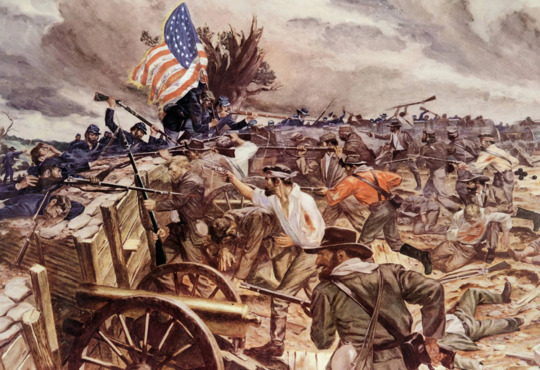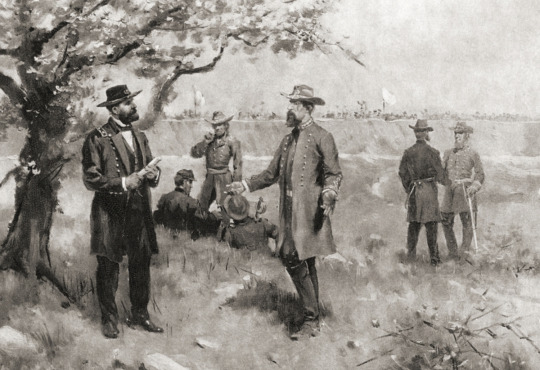#vicksburg
Text

S 24th Street, Vicksburg, Michigan.
73 notes
·
View notes
Text

Vicksburg, Mississippi. 1983
Photo: Baldwin Lee
271 notes
·
View notes
Text
🚶🏾♂️…… One step at a time….. Your almost there…..
#fyp#explore#explorepage#jacksonms#mississippi#vicksburg#alternative#grunge#youtube#alternative rock#lost#mentalhealthfucked#southern gothic#punk#punk metal#punk music#post punk
16 notes
·
View notes
Photo

Map of the Civil War Siege of Vicksburg, Mississippi., August 20, 1863.
Record Group 77: Records of the Office of the Chief of Engineers
Series: Published Maps
Image description: Map of Vicksburg, Mississippi, and surrounding areas, including a loop of the Mississippi River and the terrain around the city. Cross-sections show the Federal and Rebel batteries, and colored lines show the locations of opposing forces.
#archivesgov#August 20#1863#1800s#Civil War#U.S. Civil War#siege#military#Vicksburg#maps#maps and charts
21 notes
·
View notes
Text
#vicksburg#american civil war#war of southern liberation#memes#military history#stolen from twitter#ulysses s grant
35 notes
·
View notes
Text

The guided missile cruiser USS Vicksburg (CG 69), and the guided missile destroyers USS Roosevelt (DDG 80), USS Carney (DDG 64) and USS The Sullivans (DDG 68) launch a coordinated volley of missiles
19 notes
·
View notes
Photo






The Vicksburg Campaign, (1862–63), in the American Civil War, was a campaign by Union forces to take the Confederate stronghold of Vicksburg, Mississippi, which lay on the east bank of the Mississippi River, halfway between Memphis (north) and New Orleans (south). The capture of Vicksburg divided the Confederacy and proved the military genius of Union Gen. Ulysses S. Grant.
After the spring of 1862, when the Confederates lost Fort Henry, Fort Donelson, and Memphis in Tennessee and New Orleans in Louisiana, Vicksburg became the key remaining point of their defense of the Mississippi River. The capture of Vicksburg would yield the North control of the entire course of the river and thus enable it to isolate those Confederate states that lay west of the river from those in the east. Vicksburg was ideally suited for defensive purposes, however: it was situated on high bluffs along the river and was protected on the north by a maze of swampy bayous. The Confederates’ batteries on the bluffs could outgun any Union ships on the river.
A Union naval expedition using ironclads (May–June 1862) to subdue the Confederate batteries failed, as did an attempt to take the city by land from the north by Gen. William Tecumseh Sherman (December 1862) and an attempt by Grant to cut a canal around Vicksburg that would divert the river (February–March 1863). After this string of frustrating failures, Grant conceived a bold move that would enable him to take the city using the high-ground approaches from the east, well behind Confederate lines. Moving his army of 40,000 troops to the west bank of the Mississippi, he marched south along it for a considerable distance until he could recross the river at Bruinsburg, which lay about 30 miles (48 km) south of Vicksburg. His army recrossed to the east bank of the river by means of a Union fleet, which, under the command of Adm. David D. Porter, had run south past the batteries at Vicksburg. Once across the river, Grant quickly began moving northeast, though this meant abandoning his already tenuous supply lines and feeding his troops off the surrounding enemy countryside. His forces took Port Gibson on May 2, reached Grand Gulf on May 3, and prevented the small Confederate army of Gen. Joseph E. Johnston near Jackson from linking up with the Vicksburg forces.
Vicksburg’s commander, Gen. John C. Pemberton, led his forces out in an effort to link up with Johnston but met Grant moving westward and was forced to return to the city. On May 18 Grant arrived in the rear of Vicksburg, within which Pemberton’s 30,000 troops were isolated. After two assaults in mid-May failed, Grant settled down to methodical siege tactics while augmenting his forces. He controlled all the approaches to the city, and by early June the Confederate garrison was desperately short of ammunition and on the brink of starvation. Pemberton surrendered the city on July 4.
The surrender of Vicksburg, with the victory at the Battle of Gettysburg the previous day (July 3), greatly heartened the North and in fact marked the turning point of the war.
#ulysses s grant#vicksburg#american civil war#history#us civil war#the glorious 4th!!#always gotta make a vicksburg post for 4th of july#the twin victories! vicksburg and gettysburg!#the burgs strike again!#if you're looking for a great series of books about the wholeee vicksburg campaign...timothy b smith is the man to look at#his books?? *chefs kiss*#i'm getting a new one this week and i'm too excited to read it...
41 notes
·
View notes
Text



Mississippi River Bridge, Vicksburg, MS
#Mississippi#Mississippi River#Mississippi River bridge#Vicksburg#Vicksburg Mississippi#Mississippi nature#Mississippi travel#Mississippi hiking
13 notes
·
View notes
Photo

The Church of the Holy Trinity, Vicksburg, Mississippi, Jun. 22, 1963. Photo by Charles W. Cushman.
37 notes
·
View notes
Text
Vicksburg Siege - Vicksburg National Military Park (U.S. National Park Service)
After this battle Vicksburg stopped celebrating the 4th of July for over 50 years.
2 notes
·
View notes
Text

Currier and Ives' print of the U.S. Navy running the rebel blockade during the Vicksburg Campaign (1863).
2 notes
·
View notes
Text

Vicksburg, Mississippi. 1984
Photo: Baldwin Lee
114 notes
·
View notes
Text
The War for the Union: The Organized War 1863-1864
This book by Allan Nevins is the penultimate volume in his series, The Ordeal of the Union. “From the outset,” Professor Nevins writes, “the antagonists had been aware of a fundamental difference in position. The North had to fight for a decisive victory in the field; for the destruction or hopeless crippling of the Confederate armies, and the subjugation of the rebellious areas and their…

View On WordPress
#abraham-lincoln#american-civil-war#Gettysburg#Railroads in the Civil War#robert-e-lee#Ulysses S. Grant#Vicksburg#William T. Sherman
0 notes
Text

Vicks Personal Steam Inhaler for Congestion Relief and Coughs. Soft Face Mask for Targeted Steam. More Relief When Used with VapoPads
Vicks Personal Steam Inhaler for Congestion Relief and Coughs
#vicks#vicksvaporub#vicksburg#personal#personal post#personal thoughts#music#my art#steam#steampunk#steam games#gamers#video gaming#gaming#videogame#inhaler#congestion#relief#mosaic#coughs#motorcycle#soft girl#Soft Face Mask
0 notes
Text






The Tomato Place // Vicksburg, MS
0 notes
